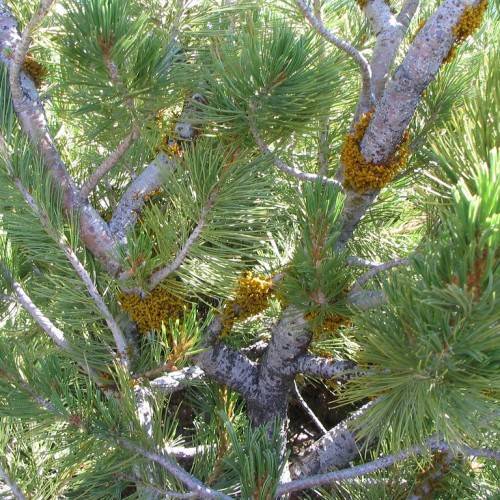
Larch Dwarf Mistletoe
Arceuthobium campylopodum subsp. laricis
Watering:
Average
Hardiness Zone:
Flowers:
Flowers
Sun:
Shade, Deciduous Shade (Spring Sun)
Soil:
Loam
Leaf:
Yes
Growth Rate:
Low
Drought Tolerant:
Yes
Salt Tolerant:
Yes
Care Level:
Medium
watering
Sarsaparilla is a low-growing perennial plant that loves moist soil. It should be watered twice a week, providing about 1 inch of water each time. Water in the morning before the heat of the day, and avoid watering in the afternoon or night. The soil should be kept consistently moist, so if the top inch of soil is dry, it's time to water. In hot, dry weather, it may need to be watered more often. During the winter, when the plant is not actively growing, water less frequently. Provide adequate drainage, and avoid sitting water.
sunlight
Sarsaparilla (Aralia nudicaulis) does best in partial shade and prefers a minimum of 4 hours of direct sunlight per day. It tolerates some direct sunlight early in the morning and late in the evening, but does best when it is shaded for a few hours each day. Ideal sun exposure for this plant species can range anywhere from partial to full shade, depending on the availability of light in a particular area. While it can handle some direct sunlight, it prefers if its exposure to sunlight comes through a filtered lens provided by nearby trees and shrubs.
pruning
Sarsaparilla (Aralia nudicaulis) should be pruned at the end of the winter season before new growth begins. Prune off any winter-damaged stems and encourage new and vigorous shoots. In addition, thin out overcrowded stems and reduce height. It is best to prune your sarsaparilla if it is growing too large. Pruning does not need to be done annually and you should not prune more than 1/3 of the plant at a time.
